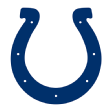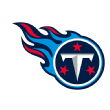Below are 32 notes covering each of the NFL's 32 teams from a fantasy perspective. Use these tidbits to make the best waiver-wire, trade and lineup decisions for Week 2. Be sure to check back each week of the season for a new version of the Fantasy 32.
Throughout this piece, I'll be referencing "OTD." OTD stands for opportunity-adjusted touchdowns. It is a statistic that weighs every carry/target and converts the data into one number that indicates a player's scoring opportunity. For example, if a player has an OTD of 3.0, it means that a league-average player who saw the same number of carries/targets in the same area of the field would have scored three touchdowns.

David Johnson suffered a wrist injury on Sunday and is expected to miss a month or more of action. With Johnson out, look for Kerwynn Williams, Andre Ellington and potentially Elijhaa Penny and newcomer D.J. Foster to form a committee in his place. On Sunday, Williams played eight snaps, carried the ball five times and was targeted once. Ellington didn't carry the ball but was targeted on three of his 16 snaps. Considering how Indianapolis was just gashed by the Rams, Williams and Ellington are worth flex consideration this week, but both are risky as the backfield gets sorted out. Whereas Williams, Ellington and Foster are on the small side, Penny is built more like Johnson and worth a flier in deep and dynasty leagues. He's racked up 49 carries each of the past two preseasons. If Chris Johnson re-signs with the team, he would be the priority add as the likely early-down and goal-line back.

Austin Hooper broke out for 128 yards, including an 88-yard touchdown against Chicago on Sunday. Despite the huge game, keep in mind that Hooper was limited to only two targets. Plain and simple, he won't be able to sustain anything to close to TE1 production unless more balls are thrown his way. The good news is that Hooper was on the field for 44 of Atlanta's 59 offensive plays (80 percent). He was on the field for no more than 75 percent of the team's snaps in a single game last year. Despite the fluky Week 1, Hooper remains positioned for a breakout 2017 season.

Danny Woodhead went down with a hamstring injury early in Sunday's victory over Cincinnati. While it was somewhat a byproduct of an extremely beneficial game script, Terrance West (25 snaps, 19 carries) and Javorius Allen (29, 21) picked up the slack. Woodhead is expected to miss some time, so West, Allen and potentially either Alex Collins or Jeremy Langford (both on the practice squad) will hold down the fort in the meantime. Expect West to get a bulk of the carries and Allen to handle change-of-pace and passing-down duties. West should be viewed as a RB2 option against Cleveland this week. Allen is more of a desperation flex option.

Zay Jones' NFL career got off to a nondescript start on Sunday. The second-round draft pick was limited to one 21-yard catch on four targets. The good news, however, is that Jones was on the field for 62 of the team's 72 offensive plays (86 percent). That was one play behind Jordan Matthews for most among offensive skill position players. Jones is clearly an every-down player, which means better box score production is on the horizon. Jones is worth a roster spot but should be on benches against a tough Carolina defense this week.

Kelvin Benjamin (1 catch, 25 yards) and Greg Olsen (2 catches, 18 yards) were major disappointments in Week 1, but keep in mind that the Panthers were leading by double digits throughout the game, which limited Cam Newton to 25 pass attempts. Olsen has been a top-five fantasy tight end each of the past three years, and Benjamin a top-28 wideout during his two full seasons. Expect a bounce-back campaign for both against Buffalo's weak secondary in Week 2.

Following his 13-touch, 113-yard Week 1 performance, rookie Tarik Cohen is sure to be one of the hottest names on waivers this week. Though he should be on your radar, it's important to keep expectations in check for the scat back. Cohen racked up 12 targets on Sunday (and was limited to an ugly 3.9 yards per target), which was certainly inflated by a Falcons defense that has significantly limited targets to the wide receiver position in recent years. Also, consider that there were only five instances during the entire 2016 season in which a running back saw 12 or more targets. In other words, Cohen won't see close to that number moving forward and he's not a realistic threat to Jordan Howard on early downs. Though Cohen stole the headlines, Howard played eight more snaps and recorded more touches (16-13, including a 13-5 edge in carries). Cohen deserves to be in the flex conversation, but he'll be a candidate for close to 10 touches most weeks. Also, should Howard miss time, the 5-foot-6, 180-pound Cohen won't be a realistic candidate for a workhorse role. You should place a claim for Cohen on waivers this week, but don't overpay.

Entering Week 1, Joe Mixon was the least likely among the "big five" rookie running backs (Mixon, Kareem Hunt, Leonard Fournette, Christian McCaffrey, Dalvin Cook) to produce at a high level. The reason, of course, was that he had the most competition for touches. Mixon was on the field for 22 snaps in his debut. He was limited to 24 yards on 11 touches in a disastrous game for Cincinnati. Giovani Bernard was the team's most effective back, racking up eight touches for 79 yards on 26 snaps. On the plus side for Mixon, he played 12 more snaps than Jeremy Hill (10 snaps, 7 touches). Mixon's role will only expand -- and the Bengals will surely have better offensive days -- but his fantasy production will be limited in the short term by the presence of Bernard and the team's weak offensive line. He should be on benches until further notice.

At least for one week, Duke Johnson Jr. changed positions to receiver. The third-year player registered zero carries and didn't line up in the backfield on any of his 47 snaps against Pittsburgh. Isaiah Crowell (49 snaps, 17 carries) and rookie Matthew Dayes (12 snaps, 3 carries) were the primary tailbacks. Johnson finished top-six among running backs in targets, receptions and receiving yards during his first two years in the league, but he also needed an average of 88.5 carries during the two campaigns just to manage 31st- and 23rd-place finishes in fantasy points. Johnson simply won't be viable flex option unless he's able to combine his slot receiver worth with a half-dozen or so carries each game. The good news is that Hue Jackson said on Monday that Johnson's usage "was the plan for the game, and it will change going forward." Expect Johnson to generate a few carries against Baltimore in Week 2.

Ezekiel Elliott registered five targets in Week 1, which is notable when you consider that he hit that mark only once all of last season. Especially with Lance Dunbar gone, the Cowboys are expected to utilize Elliott as a pass catcher more than they did when he registered a total of 32 receptions as a rookie. It's plausible Elliott can double his 2016 total this season, which would put him right there with David Johnson and Le'Veon Bell as the elite fantasy assets.

It was a two-man show in the Denver backfield in Week 1, with C.J. Anderson carrying the torch. Anderson carried the ball 20 times and handled three targets while playing 70 percent of the team's snaps (48 of 69). Jamaal Charles was on the field for 30 percent of the snaps (21 of 69) and registered 10 carries and one target. Rookie De'Angelo Henderson was busy on special teams but didn't play an offensive role. The heavy usage locks in Anderson as a solid RB2 moving forward and he should obviously be in lineups against Dallas this week. Charles is the handcuff and is a fine bench player, but the veteran back has little standalone value.

Kenny Golladay enjoyed a huge NFL debut, posting 69 yards and a pair of touchdowns on four receptions. Though the production is nice, Golladay won't be able to sustain fantasy relevance if he doesn't take on a larger role. Golladay handled seven targets but was on the field for 29 of 43 pass plays (67 percent). Marvin Jones Jr. (43 pass plays) and Golden Tate (41) were still Detroit's one-two punch at wideout. It's very possible (if not probable) Golladay's strong play earns him a larger role (perhaps at the expense of Jones), but that's unlikely to happen in the short term and especially considering the team's upcoming tough slate. In the meantime, Golladay will be a boom/bust play in Detroit's pass-heavy but super-conservative and low-volume offense. He'll be a shaky flex play against the Giants' tough secondary in Week 2. Keep him stashed.

The Packers weren't kidding when they said Ty Montgomery was their feature back. The converted wide receiver was on the field for an astounding 66 of Green Bay's 74 snaps on Sunday. Montgomery carried the ball 19 times for 54 yards and one touchdown, while also adding four catches for 39 yards. Montgomery, who paced the NFL with a 5.9 YPC last year, is unlikely to see 23 touches every week, but he also won't be facing Seattle's stacked defense. Seemingly locked in to 15 or so touches each week in Green Bay's high-powered offense, he's very much in the RB1 conversation against Atlanta in Week 2.

So much for cutting back Lamar Miller's workload. With Alfred Blue out, Tyler Ervin focused on slot receiver and rookie D'Onta Foreman limited to two snaps for some reason, Miller was on the field for 56 of the Texans' 69 snaps (81 percent) in Week 1. Despite Houston's getting smoked by Jacksonville 29-7, Miller was solid, managing 96 yards on 19 touches. Miller's efficiency was problematic last year, but as long as he's the workhorse in Houston, he'll be in the RB1 discussion. Lock him into your lineup against the Bengals' Vontaze Burfict-less defense in Week 2.

The Colts were an absolute mess without Andrew Luck in Week 1, and though the offense's prospects are bleak as long as he's out, there was some good news to come out of the game: Jack Doyle's snap total. The Colts' top tight end was on the field for 92 percent (45 of 49) of the team's offensive snaps. The usage resulted in only two receptions for 41 yards on three targets, but assuming he continues to play such a massive workload once Luck returns, Doyle will be a near-lock for a top-10 fantasy campaign. It will be tempting to drop Doyle, but I advise holding tight until we learn more on Luck's timetable.

Allen Robinson suffered a torn ACL on Sunday and is out for the rest of the season. The injury opens the door for Marqise Lee and Allen Hurns to step up as the team's top two receivers. Considering the Jaguars' weak tight end group, both Lee and Hurns can expect a generous share of the team's target share. Marcedes Lewis doesn't sport much upside but was on the field for all 60 of the team's Week 1 plays. He's a sneaky target in leagues that start two tight ends. Dede Westbrook and Rashad Greene are both on injured reserve, as well, so undrafted free agent Keelan Cole, who played 16 snaps on Sunday, will step in as the team's No. 3 receiver. He's worth an add in very deep and dynasty leagues. Lee should now be viewed as a solid flex option, and Hurns should be on benches.

Kareem Hunt was the breakout star of Week 1, posting 246 yards from scrimmage, which was the most ever for a player making his NFL debut. Hunt registered 17 carries and five targets on 37 snaps. Charcandrick West (22 snaps, 2 touches) was very busy, as well, and actually trailed Hunt by only one in pass routes (17 to 16). This was more of a committee than it appeared, and if that continues, it will certainly limit Hunt's fantasy upside. That said, the lead back in Andy Reid's offense is often a fantasy star, and Hunt has looked like exactly that so far in his career. He's best viewed as a back-end RB1 against a tough Eagles defense in Week 2.

Hunter Henry was shut down in Week 1. The second-year tight end was on the field for only 23 snaps and wasn't targeted. It's a surprising development following Henry's strong rookie campaign and offseason reports that suggested he'd play a larger role this season. Henry was on the field quite a bit early on, but disappeared with the Chargers behind on the scoreboard. Antonio Gates, meanwhile, continued as the team's primary receiving tight end and picked up three targets on 39 snaps. Henry -- and the entire Chargers offense -- will have better days when not facing arguably the league's best defense. He's a fringe starting option against Miami in Week 2.

Todd Gurley's 2017 debut gave us some good but also some bad. He racked up 24 touches for 96 yards and one touchdown. That's terrific. However, Gurley was limited to 2.1 yards per carry, which was even worse than his brutal 3.2 YPC last season. The Colts do have a pair of good defensive tackles in Henry Anderson and Johnathan Hankins, but their defense is bad enough overall that Gurley should've had more success on 19 carries. Gurley's massive usage locks him into the RB1 mix against Washington in Week 2, but we'll need to continue monitoring his brutal rushing efficiency.

The Dolphins will make the rare Week 2 season debut, and life won't be particularly easy for perimeter receivers Kenny Stills and DeVante Parker. Their primary opposition will be one of the league's best cornerback duos in Jason Verrett and Casey Hayward of the Chargers. The two helped limit Demaryius Thomas and Emmanuel Sanders to a combined eight receptions for 93 yards and no touchdowns in Week 1. Both players spent a lot of time shadowing last season, but even in those scenarios, they rarely traveled to the slot. That said, it's unlikely that one will spend the entire afternoon blanketing Jarvis Landry. Downgrade Parker and Stills but upgrade Landry this week, especially after Denver slot man Bennie Fowler scored twice in Week 1.

Some rookies are brought along slowly, while others are thrown right into the fire. Second-round tailback Dalvin Cook belongs in the latter category. Cook was on the field for 51 of Minnesota's offensive snaps (78 percent) during his NFL debut in Week 1. The Florida State product gashed the Saints defense for 127 yards on 22 carries, adding 10 more yards on three receptions. Jerick McKinnon (11 snaps, six touches) and Latavius Murray (three snaps, two carries) were well behind in the pecking order. Life won't be quite as easy at Pittsburgh in Week 2, but Cook's hefty role locks him in as a solid RB2 option. Murray and McKinnon have no standalone value and would team up in a committee if Cook was to miss time with an injury. Neither needs to be rostered.

All eyes were on Mike Gillislee (3 TDs) and Kareem Hunt (246 yards, 2 TDs) during Thursday's season opener, but it was actually James White whose usage caught my eye. Granted, New England was in the rare position of trailing during the second half, but White dominated the backfield snaps with 39. Gillislee played 21 snaps (only four of which were pass plays), Rex Burkhead played 10 snaps and Dion Lewis was in on six plays. The most surprising number for White was his carry total of 10. That was easily a career high and is over one quarter of his previous career best for a season (39 last year). The Patriots seem intent on trying not to tip their play call with personnel (they called pass on 88 percent of White's snaps last year), and that figures to lead to more carries for White. If he remains in the mix for 100-plus carries and 50-plus receptions, White will post a RB2 season in PPR formats. He's an RB2 option against the Saints in Week 2.

Week 1 didn't go according to plan for the Saints new-look backfield, albeit against one of the league's top defenses. Rookie Alvin Kamara surprisingly paced the unit in snaps (31), carries (seven) and targets (six). Mark Ingram racked up 11 touches on 26 snaps, but posted a position-best 71 yards from scrimmage. Adrian Peterson started against his old team, but was limited to six carries for 18 yards and went without a catch on one target. The three backs combined to average 2.8 yards per carry. It's clear the Saints' defensive woes will continue to keep the offense honest, which will mean more Kamara and Ingram in passing situations and less Peterson in clock-killing mode. Kamara doesn't figure to be quite as involved when New Orleans is more competitive, but his larger-than-anticipated role certainly hurts the fantasy appeal of the two veterans. Ingram is best viewed as a fringe RB2, whereas Peterson and Kamara are no more than desperation flex options against New England in Week 2.

Paul Perkins made his debut as the Giants lead back on Sunday night, but the team's offensive woes allowed him only nine touches for 25 yards on 17 snaps. Shane Vereen, meanwhile, was on the field for 29 plays and caught 9 of 10 targets for 51 yards. It was an ugly day for an offense that was without Odell Beckham Jr., but also one that ranked 30th in the league in scoring opportunities (touchdowns plus field goal attempts) last year. The Giants' offseason improvements (Brandon Marshall, Evan Engram) were overstated, especially considering Eli Manning's struggles, a lack of a running game and a poor offensive line. There will be better days for the offense, but it's hard to expect much after a laid egg against a mediocre, at best, Dallas defense. Perkins shouldn't be in lineups against Detroit this week, and Vereen is a desperation PPR flex option.

It didn't take long for newcomer Jermaine Kearse to take on a gigantic role in the Jets' offense. The former Seahawk was on the field for 52 of the team's 55 offensive plays (95 percent) against the Bills on Sunday. That was just behind Robby Anderson (54) for tops among offensive skill position players, though Kearse had the much bigger day in the box score. Kearse turned nine targets into seven receptions for 59 yards. The Jets aren't going to score often -- they registered 12 points against a shaky Bills defense, after all -- but Kearse will flirt with flex numbers if he sustains a large role. Rookie ArDarius Stewart (36 snaps), meanwhile, worked as the team's Nos. 3 receiver. His progression should be monitored, especially if he is able to emerge into an every-down player.

Amari Cooper caught 5 of 12 targets for 62 yards and one touchdown against Tennessee in Week 1, but the real story was his usage near the goal line. Cooper was targeted twice in the end zone and twice more within 5 yards of the end zone. His 1.6 OTD ranked fourth in the league behind only Mike Gillislee (2.1), Leonard Fournette (1.9) and Dez Bryant (1.8). Considering that Cooper posted a 5.1 OTD and was targeted within 5 yards of the goal line only 11 times all of last regular season, the big-time usage in Week 1 locks Cooper in as a mid- to back-end WR1.

At least from a fantasy perspective, all eyes were on the Eagles' running back distribution in Week 1. Darren Sproles (32 snaps, 7 touches) paced the unit, and LeGarrette Blount emerged as the lead early-down back (24 snaps, 15 touches). Wendell Smallwood (14 snaps, 5 touches) wasn't much of a factor, and rookies Corey Clement and Donnel Pumphrey didn't play. Blount is in the RB2 discussion in non-PPR leagues, whereas Sproles can be considered a flex in PPR.

Le'Veon Bell was a Week 1 bust, managing only 47 yards on 13 touches. Should you be panicking about the slow start for your first-round pick? Of course not. Bell was on the field for 38 (or 70 percent) of the Steelers' offensive plays, which is a high number for a running back but actually below his 96 percent average last year. Clearly limited after missing most of the offseason due to a contract dispute, Bell's role will only increase moving forward. He's locked in as a top-five fantasy back in Week 2, even against a stellar Vikings defense.

Carlos Hyde was an absolute workhorse during the 49ers' Week 1 loss to Carolina. The fourth-year back was on the field for 42 of the team's 54 offensive plays (78 percent). A poor game script and a low number of team plays allowed him only nine carries, but he accrued 45 yards and added 32 yards on six receptions. Backup Matt Breida managed four touches on 12 snaps. Hyde has a tough matchup against Seattle this week, but he's good enough and is playing a large enough role that he belongs in the RB2 mix.

Seventh-round pick Chris Carson got the start and paced the Seahawks backfield by playing 26 snaps against Green Bay in Week 1. Eddie Lacy carried the ball on five of his seven snaps and was a nonfactor. C.J. Prosise touched the ball on four of his 15 snaps. Thomas Rawls was out, of course, so predicting how this backfield will shake out in Week 2 and beyond remains a tricky exercise. Lacy's poor start isn't a good sign, but he's not the worst guy to keep on the end of your bench in the event that he gets another shot in Week 2. Prosise is a name to consider for your bench in PPR formats, as his role as the team's primary pass-catching back figures only to expand.

Fresh after sitting out Week 1, the Buccaneers will face off with the Bears in Week 2. Chicago held its own and was one conversion away from knocking off the defending NFC champion Falcons in Week 1, but this is a team with notable voids, specifically at the cornerback position. Expect Jameis Winston to feed the ball to Mike Evans and DeSean Jackson on the perimeter, especially if Prince Amukamara remains out. By the way, in case you're wondering, Doug Martin's suspension is for three games -- not three weeks -- so he will miss the team's next three games and return in Week 5.

Corey Davis was expected to be limited in his NFL debut, but the fifth-overall pick paced Tennessee with 10 targets. He was on the field for 35 of the team's 43 pass plays, which was just behind Rishard Matthews (41) and Eric Decker (39). Davis turned the heavy usage into six catches for 69 yards and "looked the part" on tape. His role is only going to increase as the weeks progress and a Tennessee offense that ranked ninth in the league in touchdowns last year will score more than once most weeks. Davis is quite possibly the league's next star wide receiver, so try to buy him while he's still being valued below market.

Are you stashing Josh Doctson on your bench? If so, you could not have been pleased with his Week 1 output. Doctson was on the field for 20 snaps, ran 17 routes and was not targeted. Doctson, of course, was the team's first-round pick in 2016 but missed all but a handful of snaps during his rookie campaign due to an Achilles injury. Doctson's role figures only to expand in the coming weeks, especially considering Washington's offensive woes against Philadelphia. Doctson very well could emerge as the team's top wideout this year and should thus remain on your bench.
